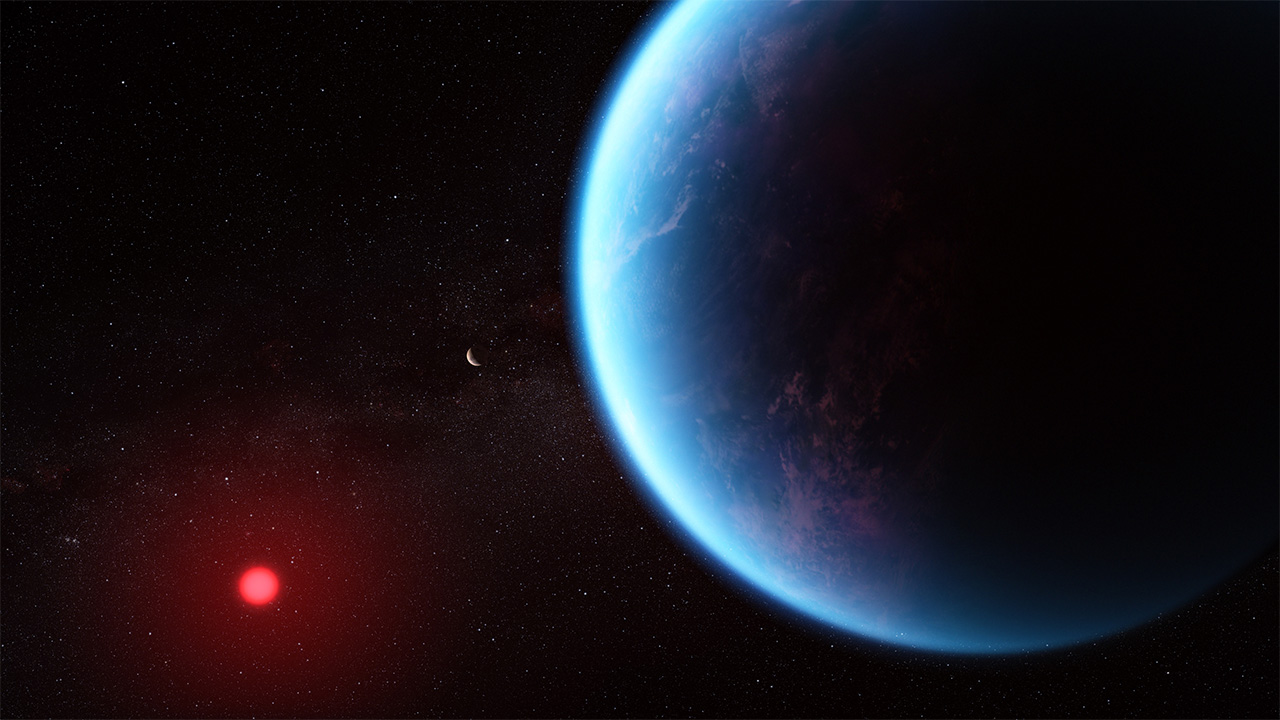A team of scientists from Cambridge has claimed to have found new, albeit tentative, evidence of life on a distant, Earth-like planet. This, according to the team, marks the second and most promising instance in which chemicals associated with life have been detected in the planet’s atmosphere.
But before you celebrate meeting Yoda or ET, other scientists are questioning the findings.
So let’s beam up and take a look at what’s been happening.
It’s alive… maybe?
Ever since we grew big brains, there’s been a question plaguing humanity: Are we alone?
Now, a team of scientists led by Cambridge astrophysicist Professor Nikku Madhusudhan, aided by the James Webb Space Telescope, has discovered two chemicals in the atmosphere of K2-18 b, a distant Earth-like planet, which on Earth are known to be produced by life. “This is the strongest evidence to date for a biological activity beyond the solar system,” says Madhusudhan.
Now, the team is not claiming to have discovered life outside the solar system. Still, the presence of the two chemicals, dimethyl sulfide (DMS) and dimethyl disulfide (DMDS) might be the key to finally answering the question of whether we’re alone in the universe.
A whole new world?
This isn’t the first time K2-18 b has made headlines. In 2023, the same team reported that it had found clear signs of methane (CH4) and carbon dioxide (CO2) in its atmosphere. But just where is this promising new world? Well, unless you have a super-fast spaceship that can defy the laws of physics, you won’t be around to see when humanity finally gets there. Lying in the Leo constellation, K2-18b is an exoplanet — a planet that orbits a star other than our Sun — that is 8.6 times as massive as Earth and is 124 light-years away. Even with our current fastest rockets, it would take more than a million years to reach the mysterious planet.
The planet orbits in the habitable zone of its red-dwarf host star, at a distance where the planet’s surface temperature can support liquid water. But with a size equivalent to half the mass of the ice giant Neptune, it’s not clear what that surface is like. This hasn’t stopped scientists from dubbing it “the most habitable known world” beyond our solar system.
So, while you might not get to see K2-18b, your future Android descendant might.
What’s life without a bit of doubt?
However, others aren’t convinced by the discoveries, questioning whether the presence of these chemicals, which are primarily produced by marine phytoplankton on Earth, can be reliably regarded as biosignatures.
“The new JWST observations of K2-18b do not provide any real evidence that potential biosignature gases (i.e. DMS or DMDS) are present. Many exoplanet astronomers, myself included, have severe concerns about the gap between the very low statistical significance in the new study — which would be considered a non-detection for any other planet — and the definitive statements being made by the science team,” said Dr. Ryan MacDonald, an astrophysicist at the University of Michigan, speaking to The Independent.
Whether the planet is teeming with life or not, it offers an exciting glimpse into the worlds humanity might one day explore and settle in. So while we can’t travel there yet, thanks to scientific advancements, we can just look and wonder if there’s anyone out there.
Tshego is a writer and law student from Pretoria. A keen follower of social media trends, his interests include high fantasy media, politics, science, talk radio, reading and listening to music.
He is also probably one of the only people left who still play Pokemon Go.
- This author does not have any more posts




